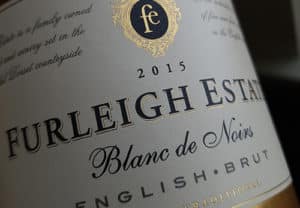Do you have the ‘winewithal’ to communicate effectively about wine?
wherewithal: the necessary funds, resources or equipment
A document that includes relevant and engaging information about an individual wine. It can be vintage specific or not vintage specific.
It can also be referred to as :
WINE TECH SHEET
FICHE TECHNIQUE
TASTING NOTE
The French name for a wine information sheet, which can also refer more specifically to the technical analysis of the wine issued for certification under the appellation system.
A document that includes technical analysis, information on winemaking, ageing, tasting note on an individual wine.
A description of how a wine looks, smells and tastes.
A document that includes relevant and engaging information about a producer their background, winemaking and viticultural practices and beliefs. Providing useful context to details on specific wines on why and how they are made.
It can also be referred to as :
PRESS SHEET
BACKGROUND
VITICULTURE & WINEMAKING
A summary of the standard information considered to be a useful indicator of the main facts for wine writers, communicators and press. This would include indications of how to obtain further information, digital images or samples.
Write a short description, that will describe the title or something informational and useful.
Write a short description, that will describe the title or something informational and useful.
 A method used to describe sparkling wines which undergo a second fermentation in bottle. This is the same method used to make Champagne. 'Méthode Champenois' (champagne method) can only be used for wines which come from the region.
A method used to describe sparkling wines which undergo a second fermentation in bottle. This is the same method used to make Champagne. 'Méthode Champenois' (champagne method) can only be used for wines which come from the region.
A French word used for sparkling wine, describing the removal of the dead yeast sediment from a bottle of sparkling wine, after it has undergone a second fermentation in bottle (disgorged (EN)). Sparkling wines made in this way are described as having been made by the ‘traditional method’ which is the same method used for making champagne.
A blend of wine and sugar added to sparkling wine. This is to replace the wine lost during disgorgement and will also determine the level of dryness or sweetness in the finished wine.
Metal cages which allow a slow mechanical, gradual rotation and inversion of bottles to upright “sur pointe” to ensure all the lees are in the neck.
Used to describe the process of how yeast cells, break-down and contribute their tertiary flavours to the wine, during second fermentation in bottle.
Vinea Wachau (Vinea Wachau Nobilis Districtus) was founded in 1983, as an association of Wachau winegrowers. They have committed to only using grapes from within the Wachau region and not buying or vinifying grapes cultivated from elsewhere.
Members of the association use their own classification 'trade marks' to define the wine styles typical of the region: 'dry white wine, which is made without any chaptalisation or noticeable wood influence'. They strive for authenticity, with wines reflecting the location, soil and weather of the region. The steep terraces often mean work can only be done by hand. The Vinea Wachau stipulates that all picking is done by hand without exception. There are 3 defined categories: Steinfeder, Federspiel and Smaragd.
DAC stands for Districtus Austriae Controllatus.
Austrian wines which come from a designated region are defined and can be labelled as Qualitätswein (quality wine). The use of DAC on the label is the legal abbreviation to further designate Qualitätswein which are also typical of their region, which includes specified grape varieties. DAC can appear on a wine label immediately after the name of the winegrowing region (e.g. Kamptal DAC), to indicate that the wine displays the unmistakeable characteristics of that winegrowing region.
Steinfeder is a feathery grass that grows in the Wachau vineyard terraces. This is the lightest of the three wine categories, a fragrant, delicate style with a maximum alcohol content of 11.5%
Federspiel in an ancient term derived from the falconry tradition in the region. Defined as the classic regional style, with elegant fruits, complexity and freshness, around 11.5 - 12.5% alcohol.
Smaragd is christened for the beautiful green lizards found on the stones terraces. These are highest quality category of concentrated and complex wine, reflecting the full potential from optimum ripeness, generally above 12.5%
Ried is the Austrian for vineyard and is used on labels to indicated a designated 'cru' vineyard.
Alte Reben - old vines

Privacy Policy | Use of Cookies | Terms of Use © 2024. All Rights Reserved.